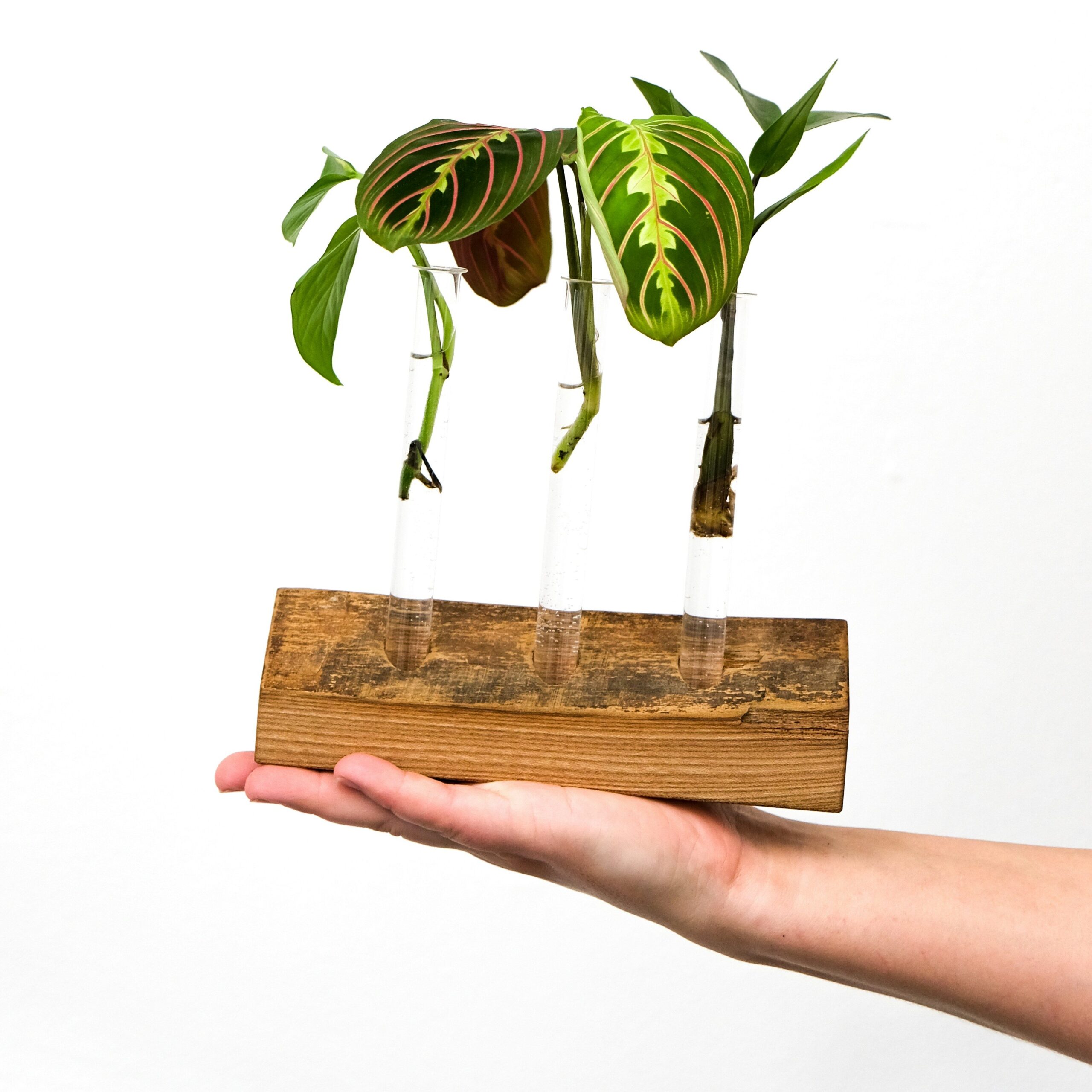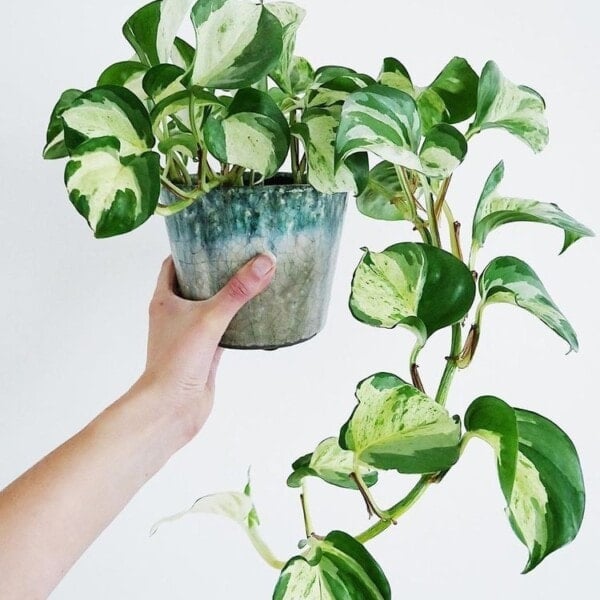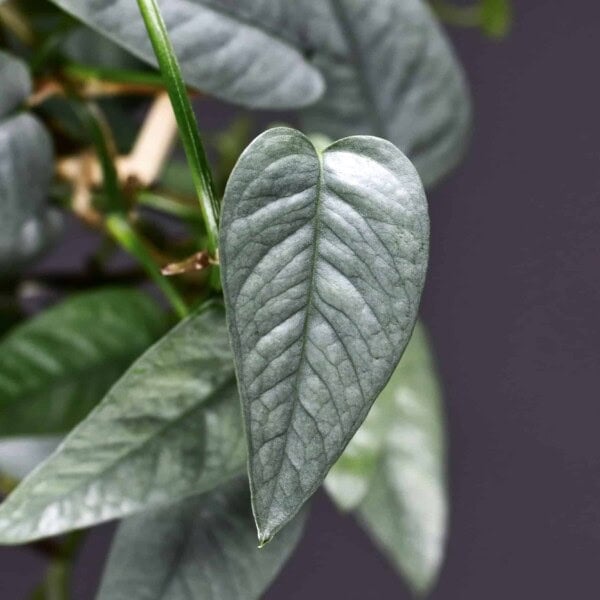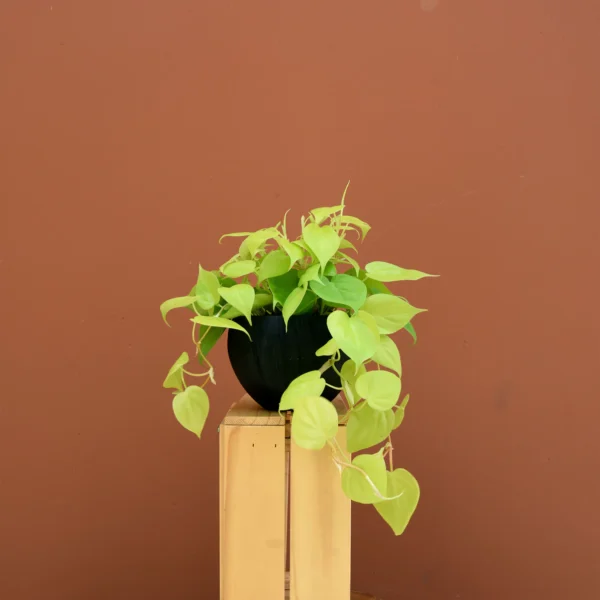A lot of people have opinions on water propagation vs soil succulents. They are both viable options to expand your indoor plant army. Each has pros and cons, and the good news is that both techniques are easy and fun – like really fun. I promise! We have had a blast propagating plants in our home for over six years. We have four, yes, four propagation stations in our house, including these absolutely insane wall-mounted vases we have in our powder bath. I have thirteen of them. Honestly, I am sure we will add more. But I digress, this post has you covered as it’s a step by step succulent leaf water propagation guide.

As a plant dad, I want the best results for my plants. Over the years, I’ve perfected the art of propagation by using both methods. Today we are going to focus on the water method. As such, this post contains all the knowledge I have gained over the years in one spot. I want this to be fun and easy for you, too. After all, plant propagation has brought me so much joy. I hope it does for you, too. Read on for my step-by-step succulent leaf water propagation process below.

Simply put, you only need to separate some leaves from your stem cuttings, place them in water, wait for them to root, and then place them in the right succulent soil when you’re done to grow new plants from old ones. Of course, the process is a bit more in-depth like how to grow avocado seeds in water.
Let’s go over it now.
What is Water Propagation? A Step by Step Succulent Leaf Water Propagation Must Know

Water propagation is a great way to grow new plants from the mother plant without the need for any potting mix or a decorative pot right away. While regular succulent propagation involves planting the cuttings into the soil right away, water propagation is a bit different.
As you’ll see in the step by step succulent leaf water propagation process I outline below, you still start by removing healthy leaves. However, these leaves are processed and then placed in a container of water, rather than soil. Some people think that water propagation vs soil succulents is a recipe for disaster, as they associate succulents with root rot (which comes from an excess of moisture).
Fortunately, if done right, this shouldn’t pose an issue. You’ll soon be able to enjoy tons of baby succulents from a single parent plan using this alternative propagation method.
Step by Step Succulent Leaf Water Propagation – The Benefits of Water Propagation

The main benefit of water propagation is simplicity. You basically only need succulent cuttings and some water to enjoy new growth. This is much simpler than the pot, spray bottle, and watering schedule required for more traditional propagation methods.
This simplicity makes it a great option for beginners. Even better? It’s also easy to track new roots with this method, as root development can be seen through the side of the container you’re using.
Lastly, it’s worth noting that—contrary to popular belief—water propagation actually reduces the risk of root rot or disease. A bit confused? Don’t worry, as I’ll explain in a bit more detail below.
The “Risks” of Water Propagation vs Soil Succulents

Since water propagation involves placing the succulents directly in water, you might be thinking that root rot will be an issue. However, it’s actually rarely an issue with this propagation method. When trying water propagation, you’re eliminating soil, which is the main reason behind root rot.
When you have wet soil, it’s easy for root rot to disrupt the propagation process. Root rot thrives in wet soil! There’s also the possibility of fungal diseases popping up, which are sure to harm your plants. However, as long as the water you’re placing your leaf cuttings in is clean, you shouldn’t run into these issues.

Of course, while water propagation vs soil succulents doesn’t increase the risk of root rot, you still might run into issues when transplanting the leaves. As such, you’ll always want to keep a close eye on your plants.
My Step by Step Succulent Leaf Water Propagation Process

So far, I’ve hinted at how well water propagation vs soil succulents works. Might as well get to explaining it, right? Well, whether it’s your first time or your second attempt, I can nearly guarantee this will work for you.
Pick out the container you’re going to use and figure out which succulent plants you want to use. Then, keep reading to grow some new succulents.
Starting Off Right On Your Step by Step Succulent Leaf Water Propagation Journey
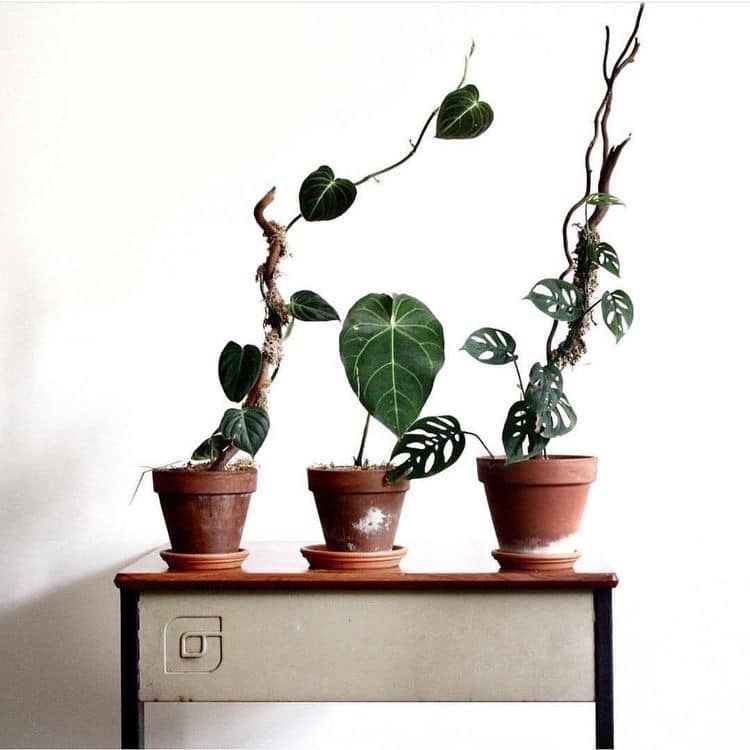
To give yourself the best chances of success, it’s vital that you pick the right leaves for the job. Successful water propagation vs soil succulents requires healthy, fleshy leaves. While you might see success with smaller leaves, I generally recommend going with a larger healthy leaf instead.
Look through your succulent collection until you find one that fits the bill. That said, if you have the space, feel free to try a few different types of plants. I’d actually recommend doing so if you can swing it, as you’ll see varying levels of success with different types of succulents.
Once you’ve picked out which leaves you want, it’s time to remove them properly.
Removing the Leaves

It’s important to avoid damaging the leaves while you’re removing them. You have two options: remove the leaves by hand, or cut them off your indoor plants.
If removing them by hand, you’ll want to gently twist the leaf from the stem until you get a clean break. This is vital, as a damaged or impartial leaf won’t grow into a full-size plant later on. Pull gently and go slowly to maximize your chance of success.

As an alternative, you might try cutting the leaf from the stem instead. Personally, this is the method I prefer. I find that having a cut end really limits the risk of accidentally damaging the leaf, increasing the chance of success later on. However, you can do either.
Wait & Watch

You never want to take your new leaves and place them directly in water right after you remove them. This can easily cause rot, and will likely ruin any chances of growing new plants from the original leaf.
Instead, lay the leaves on a paper towel and leave them out for a few days to dry. I find that dry, shaded spots tend to work the best. Direct sunlight can dry them out a bit too much.
When you finally see them callus, you can start thinking about placing them in water. I know it can be tempting to rush the process but resist all that you can. I promise you’ll be rewarded for your patience later on.
Picking the Perfect Place

Now that your healthy leaves are all calloused, it’s time to pick the perfect place to set up your step by step succulent leaf water propagation station. Ideally, you want a place with lots of indirect sunlight. This will ensure your succulent leaves get enough light exposure, without risking drying them even further.
That said, ventilation is just as important. Without proper ventilation, humidity can build up, resulting in root rot. Lastly, take practical considerations. Is this a place where your leaves can remain disturbance-free? Is it stable?
Once you’ve selected the perfect place, figure out what you’re going to place the leaves in. A simple mason jar or something similar will work fine. However, you can also get fancy with a decorative display if you wish.
The “Planting” Process
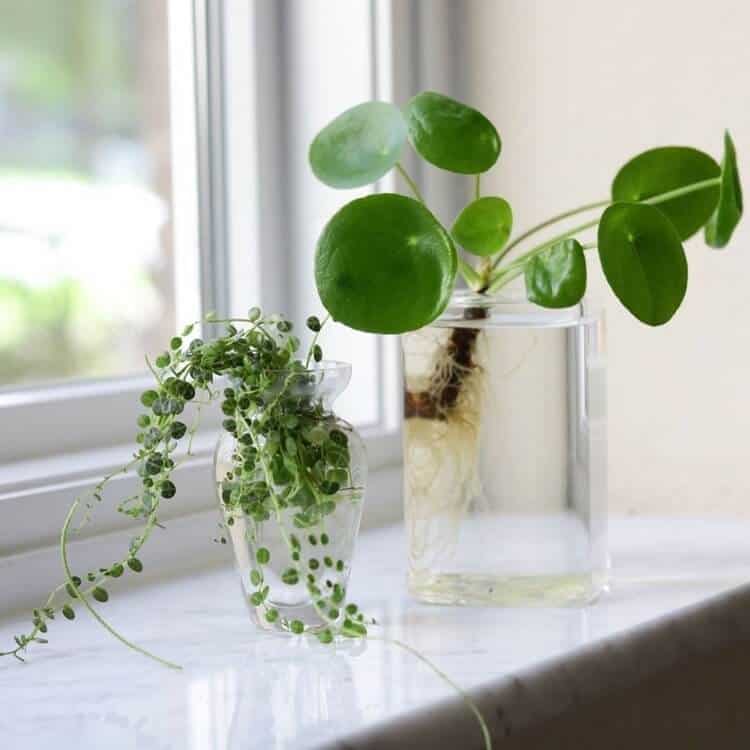
With place and “pot” picked out, it’s time to “plant” your little leaf. To start, fill the container with enough water to cover the base of the leaf. Some people prefer to dip the end of the leaf just into the water, while others prefer to leave space between the entire leaf and the water. The leaf will eventually reach for the water, but either way can work.
Just make sure you don’t use too much water, as you’ll still need to cover the top of the container with plastic wrap. This plastic wrap can be used to hold the leaf in place. Just poke a hole in it, and secure the leaf.
For the actual water, you can use tap, distilled, or filtered water. Whether or not you should use tap water is really up to your discretion. However, if it’s highly chlorinated then I’d probably recommend at least going with bottled water to give your little succulent the best chance of success.
Adding More Water As Needed
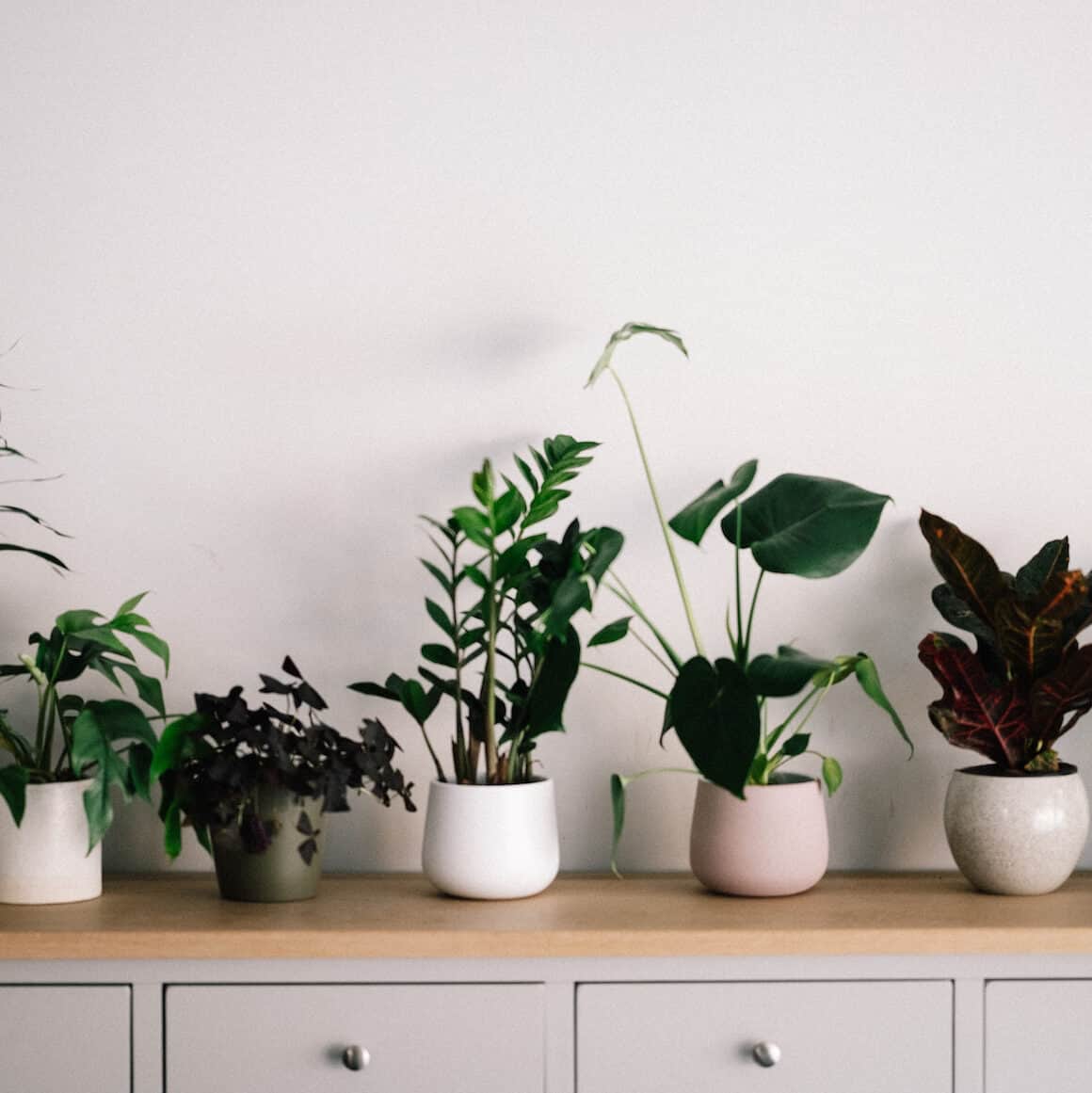
Some experts recommend changing the water every few days to avoid bacterial buildup. I haven’t personally had any issues with this, but it’s probably a good idea to do anyway. Once the plant starts absorbing water, you’ll need to add more anyway.
Although you won’t need to add any rooting hormone or do any real maintenance, you’ll still want to check back every couple of days. Add more water as needed, change out the water if desired, and watch as your plant begins to grow.
Once you notice that the water propagation vs soil succulents process has almost outgrown the original container, you can start to search around for small pots for your plant pal.
Transplant When Necessary

After the roots have grown at least a few inches long, you’ll want to put the plant into its own pot so it can turn into a mature plant. It’s a good idea to use a pot with drainage holes to help prevent moisture buildup.
Along with the pot, make sure you have the best soil for avocado seed for the job. I recommend cactus soil. Fill the pot with soil, then dig a small hole in the center. Place the succulent here, ensuring that it’s covered up to the base and sits level with the soil.
Holding the plant, you can lightly pack the soil around the plant to secure it in place. Give it a light watering to give it the best time and experience while being replanted. As before, place it somewhere with indirect light and monitor it for future growth.
My Final Thoughts on the Step by Step Succulent Leaf Water Propagation Process

| TEXT | IMG | SOURCES |
It might seem counterintuitive, but water propagation vs soil succulents isn’t really too bad. As I’ve shown you, it’s actually fairly easy to grow baby plants from a parent plant using this step by step succulent leaf water propagation process. Plus, you get the added bonus of being able to track your progress in real-time!
Once you’re done, not only will you have a new plant for the coffee table, but you’ll also have something neat to show your friends. Yes, water propagation can be successful. After all, you have the living proof.
So, is this something you’re thinking about trying? If so, let me know. I’d love to hear about all of your success, either with this or with similar small projects. See y’all soon again with another post and project. Have a great week!
Frequently Asked Questions About Water Propagation vs Soil Succulents

How often to water succulent cuttings in soil?
Cuttings require a bit more water than mature plants, so you should aim for two to four times per week.
Should I mist succulent cuttings?
Once a day is fine, as you just want enough to keep the soil lightly damp. However, this only applies to soil propagation. With the water-only approach, you won’t need to mist at all!
Should succulent stem touch water when propagating?
Some people prefer to have the stem touching, while others leave space for the stem to grow towards the water. Either way can work, so it’s really up to personal preference.
Should I add anything to propagation water?
You could technically add fertilizer, but it’s really not necessary. Instead, I’d just focus on switching out the water every so often.
How long does it take for succulent cuttings to root in water?
It varies, but two to six weeks seems to be the sweet spot.
Can you put succulent cuttings straight into soil?
No. Regardless of whether you’re using the soil or the water-based process to propagate succulent plants, you still need to let the plants dry until they have calloused.

